
Robin Wood creates wooden bowls using a pole-lathe

Highly-textured woollen jackets
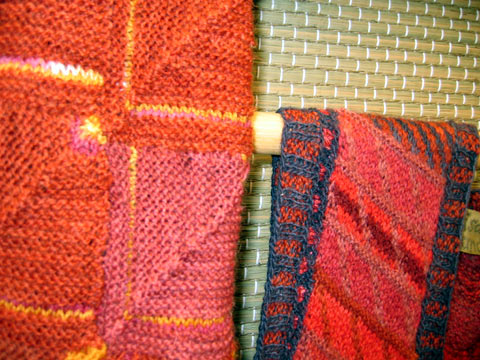
Close-up of knitted jackets

Martin Andrew's weird and wonderful glassware

Glass 2

Pure linen jacket

Jolly Potty Things

Carrie Ann Tufnell glassware
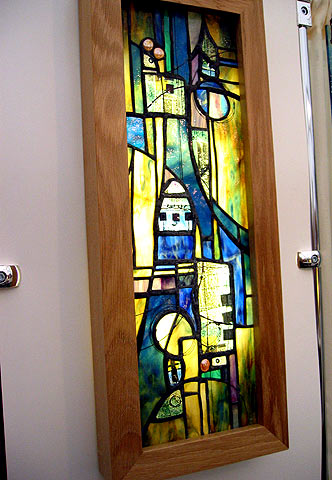
Glass panel with wooden frame

Stephen and Caroline Atkins' lustrewareware

Lizzie Houghton's splendid hats
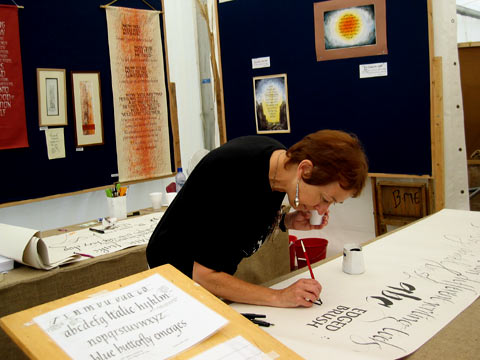
Calligrapher at work

Japanese calligraphy class
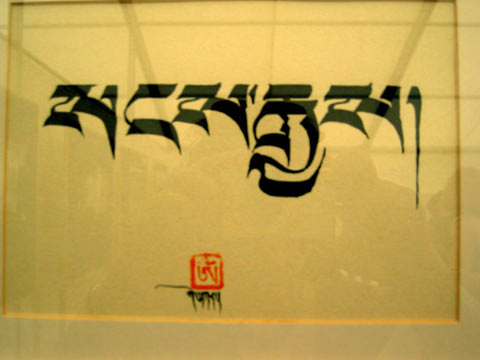
Tibetan Calligraphy: Gonkar Gyatso
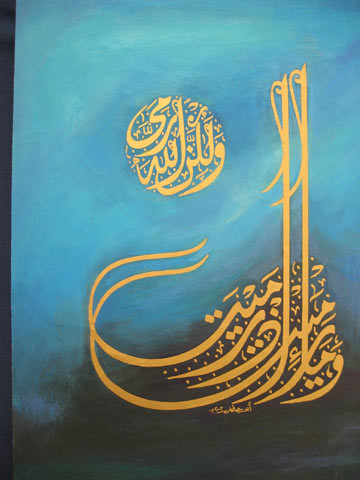
Islamic calligraphy: Mohammed Abu Mustafa

Tapestry 1 by Kirsten Glasbrook

Tapestry 2 by Kirsten

Wendy Ann Hughes silk hangings
Art in Action, one of Europe’s leading festivals of arts and crafts, took place last week in the grounds of Waterperry House near Wheatley. It was the 27th time since 1977 that this extraordinary celebration of the visual, musical and performance arts had been held in Oxford, and its return was all the more welcome after a gap of one year.
Housed in well over 30 marquees dotted around the grounds, we could find everything from calligraphy to textiles, ceramics to jewellery, printmaking to sculpture. New this year was a tent devoted to the ‘Abrahamic Arts’, showing contemporary work from the Jewish, Christian and Islamic traditions. There was also music from the Iranian Sufi tradition and from India, neither of these available on Saturday, the day I went, unfortunately. I took part in a Choral Workshop led by Bruce Ramell, singing a chorus from Handel’s ‘An Ode for Saint Cecilia’s Day’ with about fifty other people who had never met before – the result was most impressive. Pepa Chacon gave an excellent performance of flamenco dancing, despite a wobbly temporary stage which must have been a nightmare, ably accompanied by singer and guitarist Antonio Madigan.
One of the best things about Art in Action is the opportunity to talk to the makers themselves and watch them demonstrating their skills. Glass-blowing demonstrations always attract a crush of people, but raku, printmaking, weaving, sculpture and painting were not far behind in popularity. Additionally, one can pay extra to take part in practical classes, such as calligraphy, pottery-throwing or glass engraving, and there are even special classes for 3-7 year olds.
As usual, the event was extremely well organised with what seemed like hundreds of volunteers from the School of Economic Science, the organising body (see their website at www.philosophycourse.com) whose guiding philosophy is in part inspired by the Indian spiritual leader Shri Shantananda Saraswati. On a perfect day of warm sunshine with a gentle refreshing breeze, really the only fault I could find was with the price of the refreshments – next year, I’ll definitely take my own picnic.

Comments
Hide the following 3 comments
get rid of this crap
19.07.2005 06:03
...guidelines plaese
..
Re Crap
19.07.2005 07:05
As regards more ideological issues, what kind of work do you think people are going to live by 'after the abolition of capitalism'? As employees of NGOs? Local Authorities? The State? There are certainly precious few paid jobs in the alternative sector at present. Arts, crafts and music do, even in our current society, offer a degree of economic and personal freedom to their practioners.
eileen
have you read the editorial guidelines...obvoiusly not
20.07.2005 05:51
moderators-why pull one article and not the other...
.